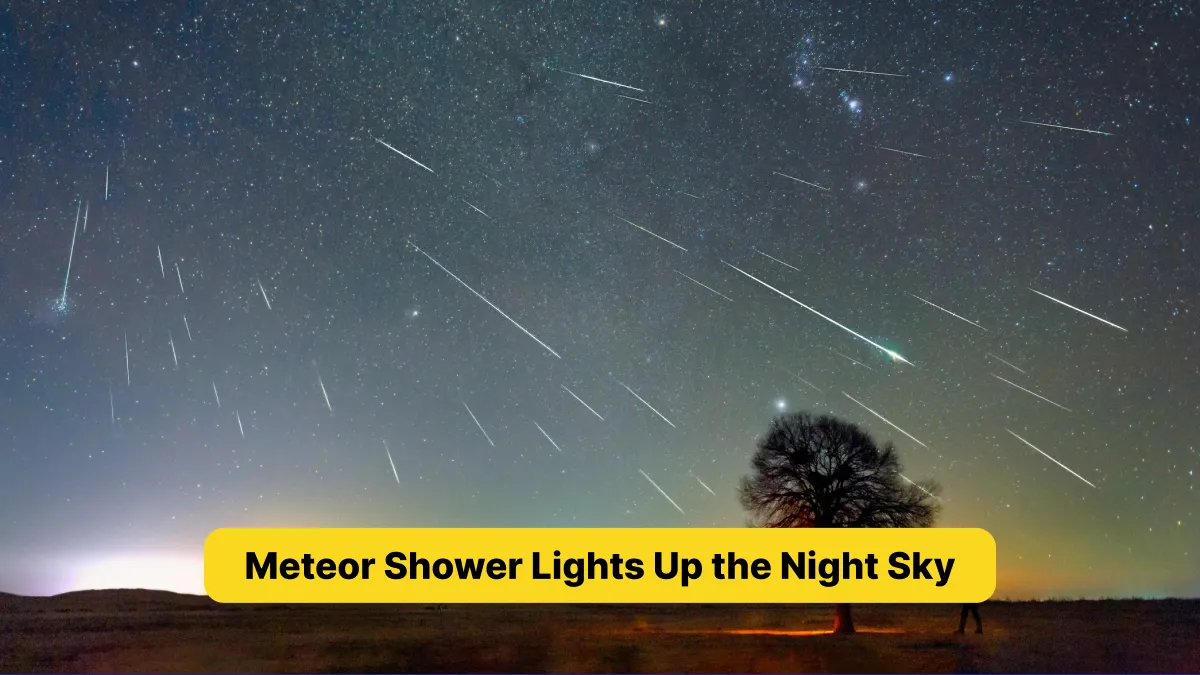On August 11, sky watchers were treated to a stunning celestial display as the Perseid meteor shower peaked. This annual event, known for its bright and numerous meteors, delighted people across the globe. Clear skies and favorable conditions made the night even more special, allowing many to witness the breathtaking show.
What is the Perseid Meteor Shower?
The Perseid meteor shower occurs every year between July 17 and August 24. It is one of the most popular meteor showers because it is both visible and consistent. The Perseids are named after the constellation Perseus, from which the meteors appear to originate. However, the meteors are actually debris left behind by the comet Swift-Tuttle, which orbits the Sun every 133 years.
As the Earth passes through this debris, tiny particles enter our atmosphere at high speeds. When they collide with the air, they burn up, creating bright streaks of light across the sky. These are the meteors, also known as “shooting stars.” The Perseids are known for producing a high number of meteors, sometimes as many as 60 to 100 per hour during the peak.
A Night to Remember
The night of August 11 was a perfect opportunity for stargazers to witness this natural phenomenon. Many people gathered in dark, open spaces away from city lights. Parks, beaches, and rural areas became popular spots for those hoping to catch a glimpse of the meteor shower.
As the night progressed, the meteors became more frequent. Each flash of light was met with gasps of awe and excitement. Families, friends, and even strangers shared the experience together, creating a sense of unity and wonder. It was a night that many will remember for years to come.
Best Viewing Conditions
Several factors contributed to the excellent viewing conditions on August 11. The weather was clear in many parts of the world, with little to no cloud cover. This allowed for an unobstructed view of the sky. Additionally, the Moon was in a waxing crescent phase, which meant its light did not interfere much with the visibility of the meteors.
For the best experience, experts recommended finding a location far from artificial lights. Lying on your back and looking up at the sky allowed for a wide field of view, making it easier to spot meteors. Patience was key, as the meteors appeared randomly across the sky. But those who waited were rewarded with a stunning show.
Why the Perseids Are Special
The Perseid meteor shower is particularly special because of its brightness and frequency. The meteors are known for their long, glowing trails, which can be more vivid than those of other meteor showers. This makes them easier to see, even for those who are not experienced stargazers.
Another reason for the Perseids’ popularity is the warm weather during the summer months. Unlike some other meteor showers, which occur during colder times of the year, the Perseids can be enjoyed comfortably outdoors. This makes it a favorite event for camping trips and late-night gatherings.
How to Capture the Moment
Many people wanted to capture the beauty of the Perseid meteor shower on camera. With the right equipment and technique, it was possible to take stunning photos of the meteors. A camera with manual settings, a tripod, and a remote shutter release were essential tools for this task.
Photographers used long exposure times to capture the streaks of light as the meteors crossed the sky. By keeping the shutter open for several seconds or even minutes, they could create images that showed multiple meteors in a single shot. The results were breathtaking, with the night sky illuminated by the radiant trails.
A Worldwide Phenomenon
The Perseid meteor shower is not just a local event; it is visible across the globe. From North America to Europe to Asia, people everywhere had the chance to witness this celestial show. Social media was filled with photos, videos, and stories from those who had seen the meteors. This global connection added to the excitement, as people from different cultures and countries shared in the wonder of the Perseids.
Looking Forward to Next Year
For those who missed the meteor shower on August 11, there is always next year. The Perseid meteor shower returns annually, offering another opportunity to see the shooting stars. Mark your calendars for mid-August, and be ready to look up at the sky once again.
In the meantime, there are other meteor showers to look forward to throughout the year. Each one offers its own unique experience, but the Perseids will always hold a special place in the hearts of stargazers. Whether you are a seasoned astronomer or just someone who enjoys the beauty of the night sky, the Perseid meteor shower is an event not to be missed.









